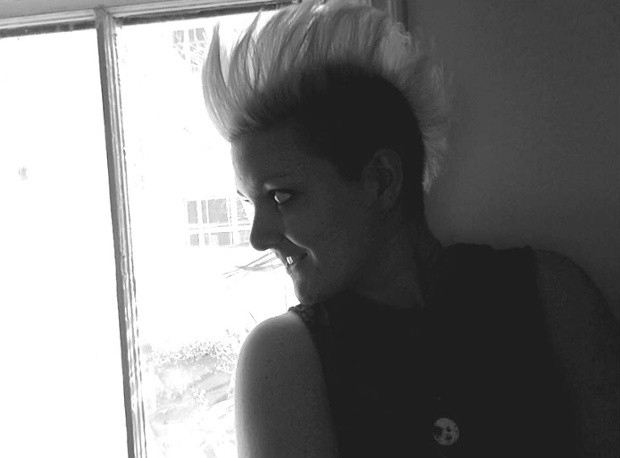In 2013, I saw two films that
deeply affected me: Judy Chaikin’s The Girls In The Band and
Sini Anderson’s The Punk Singer. In both films, the women interviewed talk about
looking for artists, filmmakers, and writers who reflect who they are as women and as musicians. They also lament the fact that they had to seek women
artists out; all the books and musicians who had been recommended to them by teachers or mentors were by default men.
It was then that I realized that, throughout my
life, the same was true for me. I reflected on all the books I had been required to
read — in high school and college — as well as all the films I had been watching
my whole life. Several of my favorite films are directed by women (Jane Campion’s Bright Star and Gillian Armstrong’s Little Women, for instance), but I rarely sought out films by
women.
Then in early 2014, I discovered the
works of Susan Seidelman, and I fell head-over-heels in love. As a fan of the 80s, how
had I never even heard of her? This was endlessly frustrating. I started a
feature on my site called Female Filmmaker Friday, wherein I discuss one film a week, directed by a
woman, of course. Each article focuses on how I came to the film, why I love it so much,
and what aspects of the film are unique to their female creators. After
a few months, though, I realized this wasn’t
enough. There are too many great films by women, and I wasn’t getting to them
fast enough.
In June of 2014, I saw an article
recommending some films by women available on Netflix. It was a fine list, but
it was all the obvious choices. There must be more, I thought, and spent an
entire Friday night compiling a diverse list of 100 films directed by 100
different women that were available to stream immediately on Netflix.
That’s
when I got the idea for A Year With Women. There are more than enough films written and/or directed by women readily available via Netflix, Hulu, VOD, and opening in select markets like Los Angeles and New York
to watch one a day.
I began A Year With Woman at the
beginning of this year to get a clean start, but also because films are at the
top of everyone’s mind during awards season and the Sundance Film
Festival. I see my project partially as a social protest, and partially as
a year of discovery. I am excited to see what a year like this will be like.
Every year, 90% or more of the films I watch are from male creators. What will
happen when I flip that percentage? How will my perspective and my life change?
I am also excited to share my
discoveries with others. In 2014, only 7% of the top 250
grossing films were directed by women. This doesn’t mean that only 7% of films
were made by women, but that only 7% of the films audiences paid to see
were by women. If more people were aware of their options, could we bump up
that percentage? I definitely think so, and intend to use A Year With Women as
a vehicle for that change.
Just in the month since I launched
this project, I have noticed something a lot of films by women have in common.
It isn’t necessarily something that can be strictly defined, but I
think Jill Soloway recently came close to explaining it when talking with The Hollywood Reporter. Female creators aren’t out to make better films than men, she said, but do have something different to offer, something that comes from their “femaleness.” I’ve felt this before in watching films made by women,
and I hope that, with my Year With Women, I’ll get a better grasp of what that really means.
Marya E. Gates works in social
media and has been writing about film and feminism online for over 15 years. She has a BA in Comparative Literature and French Literature from UC Berkeley and an MFA in Screenwriting from the Academy of Art University. In 2011, she contributed the foreword to Lew Ayres: Hollywood’s Conscientious Objector. You
can find her recent work at her blog Cinema Fanatic, including the A Year With Women feature.







